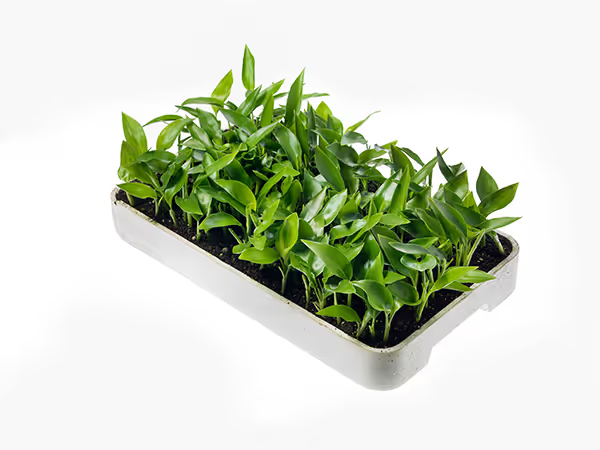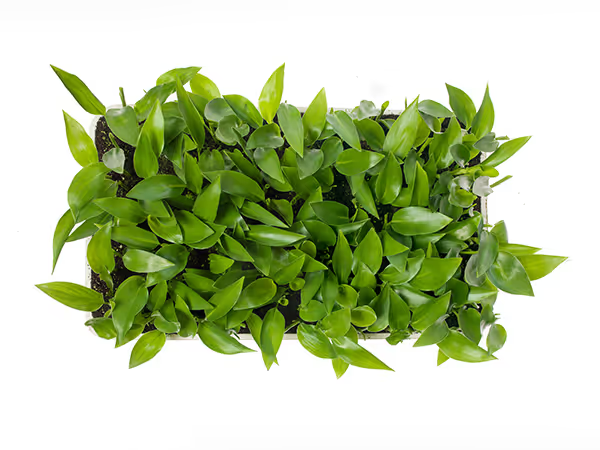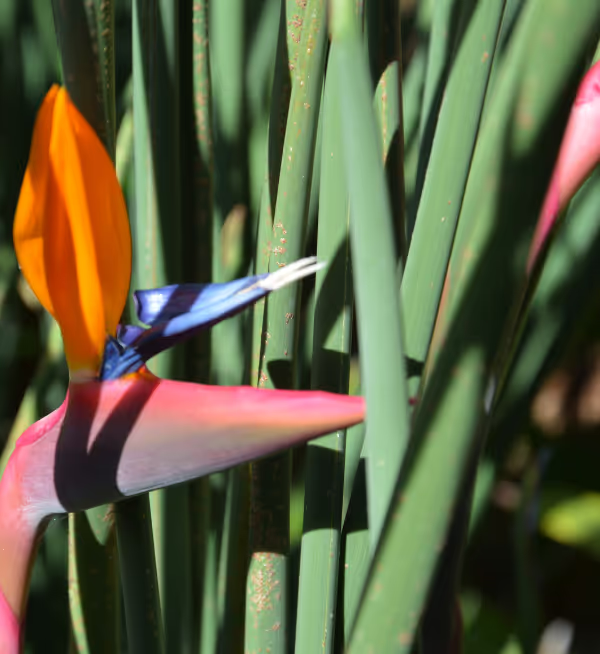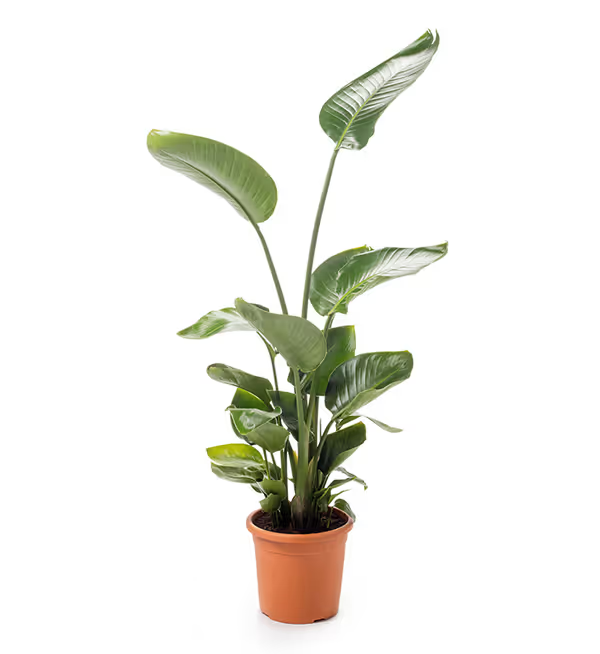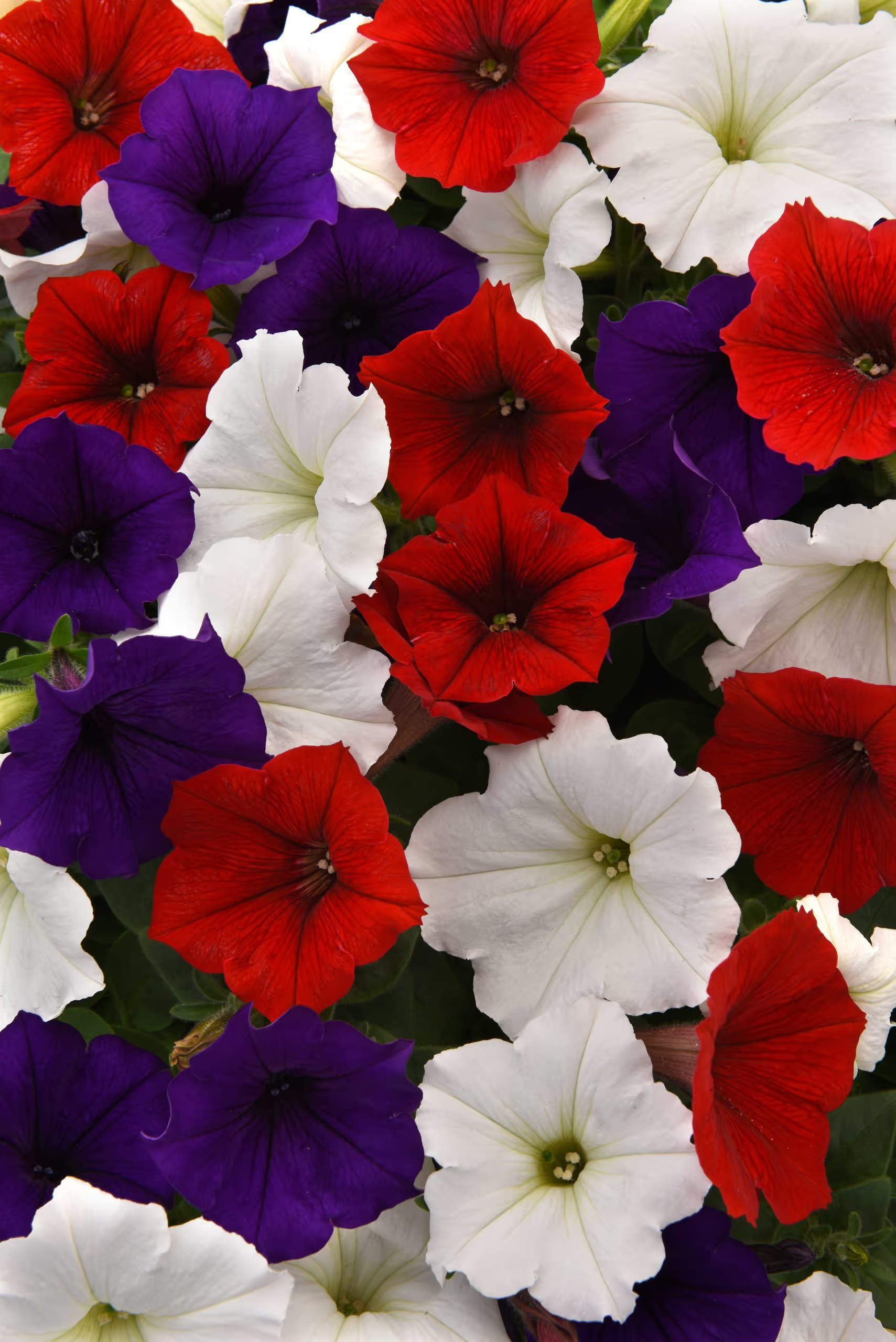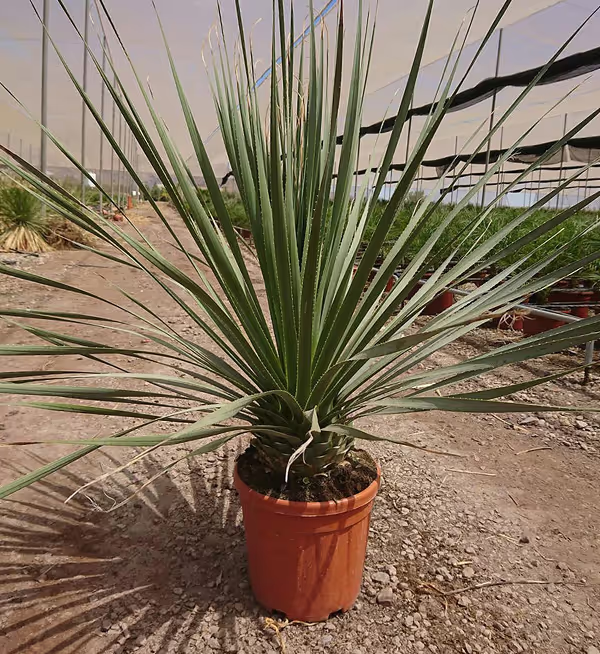Strelitzia reginae
Strelitzia reginae is een populaire subtropische bladplant die bekend is om de grote, exotische, banaanachtige bladeren en bijzondere bloemen. Strelitzia reginae komt van oorsprong voor als vaste plant voor in subtropische gebieden van Zuid-Afrika. Daar groeit het op rotsachtig grasland, in struikgewassen langs de kust en langs zonnige rivieroevers. Strelitzia reginae is de meest voorkomende en meest gebruikte soort voor potplanten- en snijbloemenproductie. Het is een geweldige kamerplant en kan in warmere periodes ook buitengezet worden. Strelitzia reginae krijgt opvallende oranje/blauwe bloemen, genesteld in de brede, grijsgroene bladeren. Deze bloemen verschijnen onder de juiste omstandigheden 3 tot 5 jaar na het ontkiemen van de zaden. Strelitzia reginae is ook bekend als Paradijsvogelplant. Andere internationaal gebruikte namen voor Strelitzia reginae zijn: Bird of paradise; Queens bird-of-paradise; Ave del paraķso; Strelitzia; Paradiesvogelblume; Strelitzie; Bird of Paradise Flower; Bird's Tongue Flower; Crane Flower. Evanthia heeft het hele jaar door Strelitzia reginae startmateriaal beschikbaar, als zaad en jonge planten uit zaad. Het kweken van pluggen uit Strelitzia zaden kan een hele uitdaging zijn. Evanthia heeft veel ervaring en doet het werk graag voor je. Voor een snelle en gemakkelijke start, bestel je Strelitzia jonge planten. Vraag ons team naar de Strelitzia teelthandleiding voor commerciėle productie. Bekijk alle Strelitzia’s in het Evanthia assortiment.
Properties
Botanical name:
Strelitzia reginae
Family:
Strelitziaceae
Series name:
Product group:
Strelitzia
VBN code:
Status:
Product group:
Airpurifying
Subtropical
Cultivation information
Starting material:
Seed
Young plant from seed
Pot size:
cm
Stem length:
-
cm
Growing location:
Plant density:
/m2
Sowing period:
Growing temperature:
Pot size:
cm
Pot size:
40-250
cm
Ideal growing temperature:
20-22
°C
Growing time to young plant:
14-26
weeks
Growing time from young plant to final product:
25
-
78
weeks
USDA Hardiness zone:
10-12
Average number of seeds per kilo:
4300
The information shown here is intended as a general guide and should not be considered growing instructions. Details are based on Western European climate conditions, unless specifically stated otherwise.


